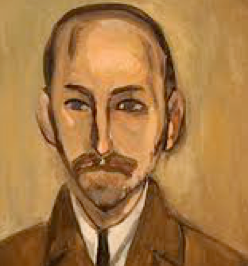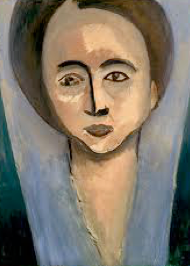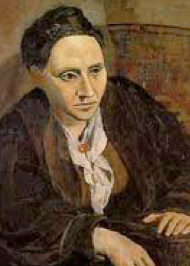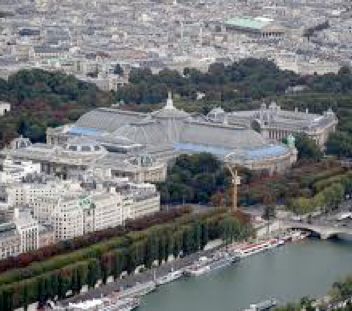the Stein Collection
exhibition at the grand palais
paris, france
europe
december 26, 2011


the Stein Collection
exhibition at the grand palais
paris, france
europe
december 26, 2011


Works of art collected by the Stein family including Gertrude Stein, her brothers, Michael Stein and Leo Stein, and Michael’s wife Sarah Stein, was on exhibition at the Grand Palais in Paris, so popular that its closing date was extended. The exhibition of works by Paul Cezanne, Pablo Picasso and Henri Matisse included works gathered from more than one hundred collections on five different continents, truly a family reunion. This exciting exhibition that brought together the turn-of-the century avant garde collection amassed by this American family beginning in 1902 when Leo moved to Paris. The apartment on Rue de Fleurus, near the Luxembourg Gardens, was small and dimly lit, without electricity in the beginning. Gertrude moved to Paris the following year. The first painting Gertrude and Leo bought together in 1904 launched their collection. It was a portrait Cezanne made of his wife in 1878. That same year, Michael and Sarah Stein, who had been living and modestly collecting art and pottery in the San Francisco area, moved to an apartment in Paris. Their joint collection began when Gertrude and Leo’s brother, Michael Stein, announced that their trust account had accumulated a balance of 8,000 francs. They spent their time at Vollard’s Gallery buying Gaugins Sunflowers and Three Tahitians, Cezanne’s Bathers and two Renoirs. Sarah and Michael Stein collected paintings and other objects with as much enthusiasm as Leo and Gertrude. The couple concentrated primarily on the work of Matisse, beginning with their first purchase (bought together with Michael’s siblings) a painting by Henri Matisse, Woman with a Hat, c. 1905, from the Salon d’Autumne at the Grand Palais in Paris that same year. They were struck by the fauvist colors, paying 500 francs for what is now a priceless painting. Sarah Stein, who had studied painting at the Mark Hopkin’s Institute of Art in San Francisco, bought La Raie vert/The Green Line the same year, one of Matisse’s masterpieces at the Salle des Fauves. She was one of his staunchest supporters from 1905 until 1935, when she and her husband left Paris. None of the Steins had great wealth, but spent what money they had on art. On Saturday evenings, Leo and Gertrude they held a salon or open house where visitors came to meet the artists and view the radical works of art in the collection. Other artists, collectors, groupies, and art dealers stopped by to view the work, revolutionary in the early 1900’s. Painters were influenced by one another’s pictures; and, the Steins’ collection and their passion for these new works spread beyond their friends. Along with Gertrude and Leo Stein, Michael and Sarah also held a weekly Saturday evening open house at 58 rue Madame, a parish house they had remodeled when they first moved to Paris. These events not only showcased their collection, but gave Sarah a captive audience for discussions about Matisse’s genius, and also attracted a shifting group of artists, writers, potential collectors. The two salons had a major influence on the cultural life in Paris. Sarah Stein in credited with presenting Matisse and Picasso to one another. In 1906, Michael and Sarah Stein introduced Matisse to America when they visited San Francisco after the earthquake. In 1907, Matisse included the Steins’ son, Allan in his painting Boy With a Butterfly Net. By 1908 the Steins were priced out of the market and could no longer compete with the international collectors buying the works of art, especially those of Matisse. On the other hand, Sarah, with the help of her husband, persuaded Matisse to open a school of painting. At the time Matisse was suffering financially, and Sarah made him her hero when she defended his work, convinced he was a great master. She also took lessons at his school, taking notes that reveal he was humanistic rather than radical, that his work was inspired by the classics and condemned any modern neglect of spiritual values. In 1913, Michael and Sarah stein loaned Matisse’s work to the Armory Show in New York City, exposing a large audience to the work of this modernist. In 1914, Leo, who resented Gertrude’s infatuation with Alice B. Toklas (whom he described as “a kind of abnormal vampire”) moved to Settignano, Italy near Florence, and his and Gertrude’s art collection was divided. He departed with sixteen Renoirs leaving the Picassos and most Matisse paintings to his sister, taking only a portrait sketch Picasso had done of him. He remained dedicated to Cézanne, leaving all the artist’s work with his sister and taking only Cézanne’s painting Five Apples. That same year, Michael and Sarah agreed to loan nineteen of their finest paintings for an exhibition at Fritz Gurlitt’s Gallery in Berlin. WW I blocked their works in Germany, and they were never recovered. In 1925, the couple bought Matisse’s painting entitled Tea, a large work measuring 500x322 cm/16x10 feet. Michael and Sarah Stein returned to the USA in 1935 and made the large painting a centerpiece of their collection. Michael died in 1938 in San Francisco. Upon their leaving Paris for San Francisco, Matisse proclaimed himself très desolé, though he and Sarah continued to correspond until the end of their lives. She died in 1953, and Matisse died in 1954. Sarah considered giving her collection to San Francisco’s new modern art museum, but instead sold off paintings to finance her grandson, Daniel, as a breeder and trainer of horses. Sarah’s friend, Elsie Stern Haas joined with a group of friends, many of them residents of Pacific Heights, in buying Sarah’s paintings one at a time with a view of their eventual acquisition by the new museum. Many of these did go to the SFMOMA, where Woman with a Hat, is today the crown jewel of the museum’s collection. In 1946, Gertrude Stein died in Paris. At her death, her remaining collection was concentrated on the work of Picasso and Juan Gris, she having already sold the rest of her pictures. Leo Stein died of cancer in Florence in 1947; his wife, Nina Auzias, a long-time love interest whom he married in 1921, committed suicide two years later. The art collections of Gertrude, Leo, Michael and Sarah Stein combined, contained works such as Picasso’s Boy Leading a Horse, Lady with a Fan, and Portrait of Gertrude Stein, plus Cezanne’s portrait of his wife and Matisse’s Woman with a Hat, all examples of the high quality of works from their collection that now fill museums around the world. Rebecca Rabinow of the Metropolitan Museum of Art in New York stated the following about the Steins’ collection: “It was more than just a collection. It was really the seed that began the spread of what we consider modern art throughout Europe and America”.
PHOTOS: Top Two: 1. Poster for the exhibition of the Stein collection at the Grand Palais in Paris 2011-2012. 2. Aerial photograph of the Grand Palais, Paris. Bottom Three: Portraits of the collectors: 1. Painting detail: Gertrude Stein by Picasso 1906-07. 2. Painting detail: Leo Stein by Henri Matisse, 1916 3. Painting detail: Sarah Stein (wife of Michael Stein) by Henri Matisse, 1916.

Americans in Paris c. 1902-1930
Leo Stein, Michael & Sarah Stein, Gertrude Stein




